Daimler India Commercial Vehicles Inaugurates New, Modern Mechatronics Lab
- By MT Bureau
- August 19, 2024
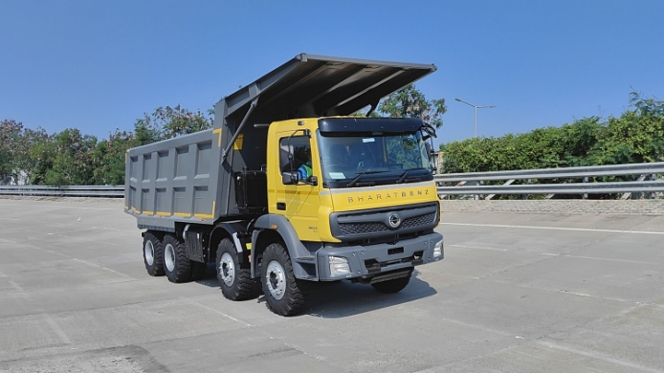
Daimler India Commercial Vehicles (DICV) has commissioned a new, modern Mechatronics Lab inside its Oragadam (Chennai) facility. This lab has been built to significantly increase the efficiency of software architecture verification and validation. It has also been built to ensure cost efficiencies in the range of 70-80 percent when compared to traditional methods.
The agile methodologies deployed in the lab will facilitate the rapid identification and resolution of software bugs through a close-loop feedback system. The testing and verification methods that earlier took weeks and months will now take days with the new lab in the loop, thereby drastically improving the efficacy of quality and testing processes.
The Mechatronics Lab verifies and validates software feature functionality for trucks and buses that not only meet current safety standards, but also helps Daimler Truck products manufactured in DICV stay ahead of the curve in meeting future global safety regulations.
Instrumental in driving DICV’s research and development efforts, particularly in enhancing the efficiency, safety and performance of its trucks and buses as well as shrinking the ‘time-to-market’, the lab would enable simulation and confirmation of rare fault cases that are challenging to reproduce in real-world conditions, ensuring comprehensive verification and validation.
The lab's infrastructure includes a flashing station for pre-production verification of all ECUs, ensuring hardware and software compatibility before production, thus minimizing errors, and reducing the need for re-releases. The ADAS setup allows on-road data to be reproduced in the lab, aiding initial software modifications and reducing vehicle dependency, saving time and cost. The lab also enables safe verification of Driver State Monitoring (DSM), avoiding risky in-vehicle trials.
Speaking about the new lab, Pradeep Kumar Thimmaiyan, President of Product Engineering & Chief Technology Officer, Daimler India Commercial Vehicles, said, “Our new Mechatronics Lab signals a transformative phase in our Research and Development operations, ushering us into an era that underscores enhanced agility and breakthrough innovations. Beyond validation, our Mechatronics Lab stands as a hub for innovation, positioning us uniquely on the global stage. Already, the lab is the core of our future electrical and electronic architectures. The DICV Mechatronics Lab complements the company's long-term vision, positioning it at the forefront of technological advancements in the commercial vehicle sector. It underscores our commitment to 'Make and Develop in India, for India and the World’, embodying our vision to not only cater to domestic needs but also to set new benchmarks internationally.”
Dilip Shrivastava, Head of Mechatronics and Software Technology, Daimler India Commercial Vehicles added, “Our Lab can verify and validate around 300 features, encompassing over a thousand signals within 10 days, and can verify 600 fault codes in a developing product in just a few weeks, which otherwise would have taken months. Our aim is to ensure our software architecture gets verified and validated before it gets embedded in our trucks and buses as early identification of software bugs which saves enormous developmental cost. Keeping our long-term vision in mind we are bringing such efficiencies that can accelerate product development cycles for which our Mechatronics Lab will play a lead role. By establishing the lab, evaluation of diverse vehicle architectures has become seamless, eliminating the need for multiple test vehicles while enhancing the overall efficiency.”
ParkMate Rebranded As Blyp
- By MT Bureau
- July 03, 2025

Delhi-NCR-based smart parking and mobility solutions provider ParkMate has rebranded itself as Blyp, which it stated is part of its vision to become a tech-driven urban mobility ecosystem that goes far beyond parking.
Dhananjaya Bharadwaj, Co-Founder & CEO, Blyp, said, “The name Blyp represents speed, precision and simplicity – exactly what we want to deliver to every urban commuter. This rebrand is more than just a new look. It’s a reflection of our expanded mission – to reimagine urban movement through data, design and deep tech. We’re excited to introduce Blyp as the mobility companion of tomorrow’s India.”
With a new identity, Blyp aims to become an enabler of intelligent urban navigation, offering users real-time parking discovery, smart routing, EV compatibility and partner integration across both public and private sectors.
Abhimanyu Singh, Co-Founder & COO, Blyp, said, “ParkMate was our beginning – a product born out of a real problem. Blyp is our evolution. Over the years, we’ve grown from a parking solution into a full-fledged mobility tech platform. This rebrand allows us to think bigger, move faster and build deeper value for individuals, businesses and governments alike.”
Going forward, the company will roll out new features, expand into new cities and aims to build new infrastructure collaborations.
- RV College of Engineering
- RVCE
- Dover India
- Dover Corporation
- hydrogen
- Vivek Srivastava
- Tushar Banerjee
- Prashanth Santhanam
- Dr M P Shyam
- Dr K N Subramanya
- Rashtreeya Sikshana Samithi Trust
- Dr Geetha K S
- Dr Ujwal Shreenag Meda
Dover India and RV College of Engineering Establish Advanced Hydrogen R&D Facility
- By MT Bureau
- July 03, 2025
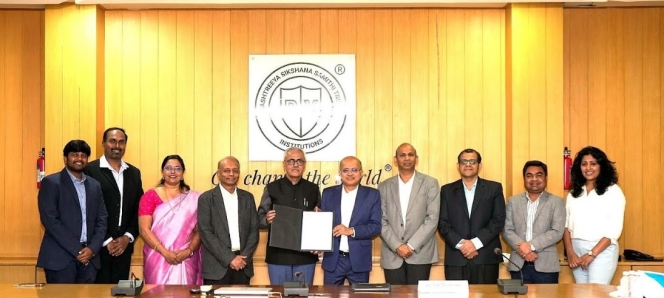
Dover India, part of USD 7 billion Dover Corporation, has joined with RV College of Engineering (RVCE), Bengaluru, to set up a laboratory in Materials and Component Reliability Testing under the Centre for Hydrogen and Green Technology, a Centre of Excellence at RVCE.
The facility will focus on research in the area of hydrogen technologies and advanced material reliability under extreme environments. The idea is to explore emerging areas in hydrogen technology such as sustainable materials, Internet of Things (IoT) and Industry 4.0 solutions. The lab will be housed within the RVCE campus.
The partners state such facilities, designed according to global standards, are first-of-their-kind in India and are available only in a handful of countries globally. It will bring over 20 technologists from Dover and RVCE to work on next-generation research focusing on generation, storage, transportation, handling, safety and end-applications for hydrogen.
Established in 2021, Dover India’s R&D arm in Bengaluru, is claimed to have emerged as a leading Innovation Centre focusing on prognostics, tribology, corrosion and coatings, polymer synthesis and material characterisation.
Vivek Srivastava, R&D Head, Dover India, said, “Collaborating with RVCE enables us to foster a strong academia-industry partnership that will fuel the next wave of clean energy innovation and cover the entire spectrum of basic and applied research in this area.”
The Memorandum of Understanding (MoU) formally signed between the two organisations saw participation from Dover India’s Tushar Banerjee, Vice President & Managing Director and Prashanth Santhanam, Senior Director – Finance. Dr M P Shyam, President – Rashtreeya Sikshana Samithi Trust (RSST), Dr K N Subramanya, Principal – RV College of Engineering and Dr Geetha K S, Vice Principal – Strategic Higher Education Leader, Expert in STEM Curriculum Development, Research & Innovation and Dr Ujwal Shreenag Meda, Coordinator, Centre for Hydrogen and Green Technology represented RVCE.
MoRTH Announces New Motor Vehicle Aggregator Policy To Bring In More Accountability & Transparency
- By MT Bureau
- July 02, 2025

The Ministry of Road Transport & Highways (MoRTH) has introduced the Motor Vehicles Aggregator Guidelines, 2025, a revamped policy aimed at modernising the ride-hailing sector with a focus on safety, driver welfare and transparent operations. Under the new guidelines, a structured fare system and clear cancellation penalties are now in place.
The policy states that the State Government's notified fare will serve as the base fare, wherein aggregators can charge a minimum of 50 percent below during non-peak hours and a maximum of two times the base fare during peak demand (as compared to 1.5x). A base fare for a minimum of 3km is chargeable to compensate for dead mileage.
Drivers are guaranteed at least 80 percent of the fare, with daily, weekly or fortnightly settlements. For aggregator-owned vehicles, drivers receive at least 60 percent of the fare.
A penalty of 10 percent of the fare (up to INR 100) may be imposed for unvalidated cancellations by either the driver or the passenger. No charge for dead mileage will apply unless the ride distance is less than 3km, the fare will only be charged from origin to destination.
The new policy introduces important provisions for aggregators:
Passenger Insurance: A minimum insurance cover of INR 500,000 for passengers is now mandatory.
Aggregators cannot prevent drivers from working with multiple platforms. A mandatory in-app rating system for both drivers and passengers is required to ensure quality service.
Furthermore, a comprehensive mandatory 40-hour Induction Training Programme is now compulsory for drivers, covering app usage, legal provisions, first responder training, safe driving and sensitivity towards gender and Divyangjans.
Drivers must undergo mandatory medical examinations, psychological analyses and police verification. Aggregators will also need to provide a Health insurance (minimum INR 500,000) and term insurance (minimum INR 1 million) for each driver, with annual increases.
Annual refresher training is now mandated, with quarterly training for drivers with low ratings. Aggregators are not allowed to onboard vehicles older than 8 years from their initial registration. The app and website (aggregator) must disclose the proportion of fare and incentives provided to drivers.
To ensure accessibility, the aggregator apps must now include special features for Divyangjans, which also provides for divyangjan-friendly vehicles mandated by State governments.
Aggregators must maintain a 24x7 control room and call centre with the vehicles requiring functional tracking devices linked to government control centres, with in-app mechanisms to detect route deviations and alert authorities.
The aggregators are responsible for the safety of all passengers, particularly children, women and Divyangjans.
- Traton Group
- L&T Technology Services
- LTTS
- ADAS
- autonomous
- Alind Saxena
- Navistar
- MAN
- Scania
- Volkswagen Truck & Bus
- International
Traton Group Onboards L&T Technology Services As Strategic Partner To Support Global R&D Transformation
- By MT Bureau
- July 02, 2025
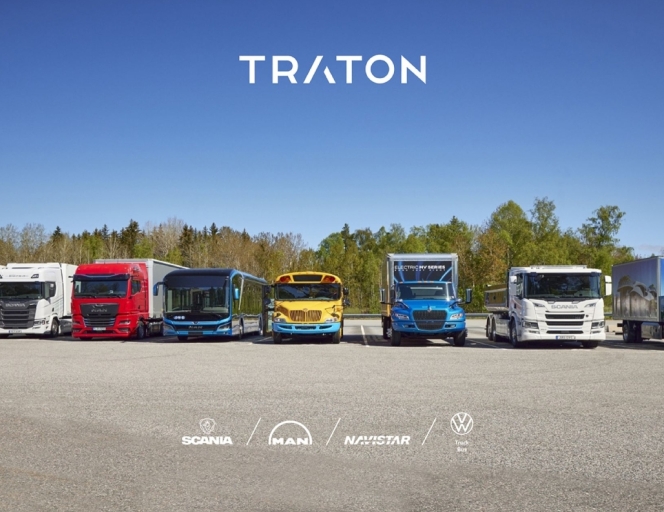
Bengaluru-headquartered engineering R&D services company L&T Technology Services (LTTS) has been selected by the Traton Group, one of the world’s leading manufacturers of commercial vehicles housing iconic brands such as Scania, MAN, International and Volkswagen Truck & Bus, as a strategic engineering partner.
As per the understanding, Traton Group will leverage LTTS’ Mobility segment to build a unified, future-ready product-development platform that delivers scale, speed and sustainable mobility solutions.
The automotive major recently consolidated its global R&D ecosystem to unlock cross-brand synergies while expanding the share of battery-electric vehicles in line with its 2029 profitability and sustainability targets.
On the other hand, LTTS’ will provide engineering support, from mechanical and software engineering to digital systems integration - across key development hubs in Sweden, Germany, the United States, Poland and India.
The collaboration will focus on software-defined vehicle architectures, electrified powertrains, autonomous & ADAS feature development and advanced digital engineering toolchains.
Alind Saxena, Executive Director & President - Mobility & Tech, L&T Technology Services, said, “Being selected by Traton Group is a testament to LTTS’ leadership in next-generation Mobility engineering. This collaboration underscores our commitment to delivering cutting-edge solutions that align with Traton’s vision of sustainable and intelligent transportation. With our proven track record in engineering transformation, we are excited to help Traton achieve its ambitious goals of electrification, autonomy, and digital innovation while redefining the future of commercial mobility.”



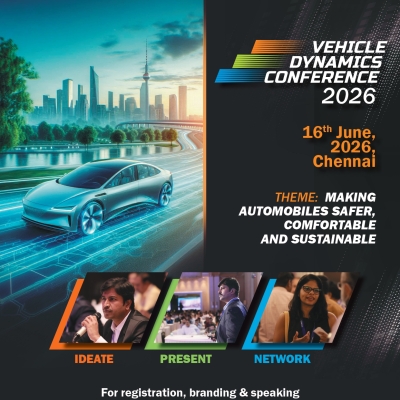
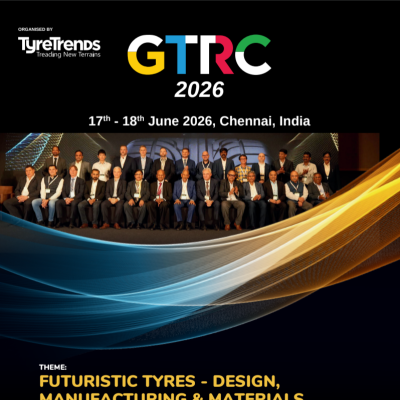
Comments (0)
ADD COMMENT